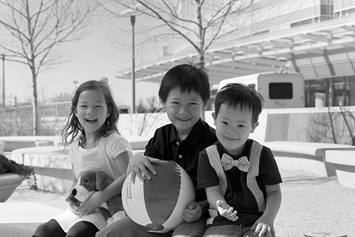Keratosis Pilaris
Keratosis pilaris is a common skin condition that causes small, scaly bumps on the skin. It is not harmful and can be managed with regular skin care.
What Is Keratosis Pilaris?
Keratosis pilaris (ker uh TOH siss pill AIR iss) is a dry skin type. It looks like dry, rough, small bumps that are flesh-colored or pink and can feel like sandpaper or chicken skin. It is usually not itchy.
The most common areas for these bumps are on the back of the arms, front of the thighs and face (cheeks). It can be widespread on the body, but this is less common.
Keratosis pilaris is often hereditary (runs in the family) so relatives may also have these skin bumps. It is not contagious (is not passed from person to person). It is caused by dead skin that plugs the pores, forming the hard, dry bumps.
How Is Keratosis Pilaris Diagnosed?
Your child’s doctor can diagnose this during a physical exam. No further testing is needed. Often children with keratosis pilaris will also have other sensitive dry skin problems such as eczema.
How Is Keratosis Pilaris Treated?
Keratosis pilaris may never go away completely. There are treatments that can help. Once treatment is stopped, the bumps often return.
- Using unscented, gentle moisturizers daily can improve how the bumps look. (See Helping Hand HH-IV-130, Dry Skin Care)
- Some moisturizers (such as CeraVeSA® or Lac-Hydrin®) contain ceramides or a mild acid. These can help remove dead skin cells from the skin’s surface (exfoliate). They may help clear the dead skin plugs. Moisturizers that contain urea may also be helpful.
- A mild topical (on the skin) corticosteroid can be used if the bumps are itchy.
- Avoid harsh exfoliators, picking or constant manipulation of the bumps. This can cause more irritation.
Some areas of keratosis pilaris on your child may improve with age. However, this condition typically continues. If your child is not bothered by these areas, then no treatment is needed.
Helping Hands Patient Education Materials
Written and illustrated by medical, nursing and allied health professionals at Nationwide Children's Hospital, Helping Hand instructions are intended as a supplement to verbal instructions provided by a medical professional. The information is periodically reviewed and revised to reflect our current practice. However, Nationwide Children's Hospital is not responsible for any consequences resulting from the use or misuse of the information in the Helping Hands.
HH-I-414 | ©2017, revised 3/17, Nationwide Children’s Hospital



